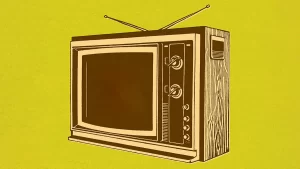Each day seems to bring advertisers new evidence suggesting the decline of traditional TV. Earlier this summer mogul Jeffrey Katzenberg announced $1 billion in funding to launch a new mobile video media company called NewTV. Meanwhile, consumer attention continues to shift toward new viewing formats like OTT, while global ad spending proceeds with its transition toward digital ad formats. But amid this “doom and gloom” about the future of television, there are lots of signs that TV and TV advertising may be more resilient than we might think. Here are three reasons to believe in the staying power of TV.
Americans Still Watch an Incredible Amount of Television
The prevailing narrative about TV tells us that viewers are increasingly shifting their attention to new types of platforms, screens and devices. But just how much has attention shifted? Not as much as you might think. In fact, the number of hours per day the typical American watches traditional TV is just barely off its peak of 2010, with Nielsen noting that American households are still watching more than 7 hours and 50 minutes per day. Adding to this consensus is a global TV habits study conducted by Thinkbox across 19 countries, which found that TV accounts for 90% of the average viewer’s video time in a given day. There’s no question that new digital formats like YouTube, mobile video and OTT are cutting into some of this TV viewing time. But based on available data, TV continues to dominate consumer attention.
TV Is Still the Best Way for Brands to Reach Audiences
Another common talking point about digital ad formats is that they are much more effective when it comes to reaching consumers. In some regards, this is true. But it also ignores the sheer scale and staying power of linear TV with advertisers. As Felix Salmon, author of a recent Wired article about TV’s staying power notes, “Even if ratings decline, TV remains the only realistic way for companies, especially if they make consumer packaged goods, to showcase their brands in front of the people who do America’s shopping.” And it’s not just traditional CPG brands that seem to be flocking to TV these days – even upstart digital-first brands like Airbnb and Fitbit are increasingly investing in TV-focused ad campaigns. Both brands saw a significant lift in website visits following their initial TV efforts.
TV Has Perfected the Right Mix of Content and Advertising
Yet another advantage of TV is its accepted blend of content and advertising. Despite all the innovation that’s occurred in media over the past few decades, few digital media formats have been able to achieve that same optimal mix of content, advertising and scale offered by television. Consider the growing success of Netflix and Amazon, who now compete for viewers’ attention with TV. That’s been great for consumers, but bad news for advertisers, who have no viable model to reach consumers on these platforms. Ultimately, the most successful medium isn’t solely dependent on where consumers spend their time. It’s also dependent on which medium advertisers feel is best for them to reach consumers. As Salmon notes in his article for Wired, “There will always be big money wherever advertisers can garner the greatest number of minutes of consumer attention. TV has cracked that code; its would-be disruptors aren’t even close.”
Today’s media landscape is vastly different than the one facing advertisers ten years ago, with digital screen time and advertising taking on a growing importance to the industry. But even as digital rises in importance with consumers and advertisers alike, don’t count TV out just yet. For all the talk about the “end of television,” this longstanding format has proved it has remarkable staying power, thanks to continued time spent by consumers and stalwart support from advertisers.


